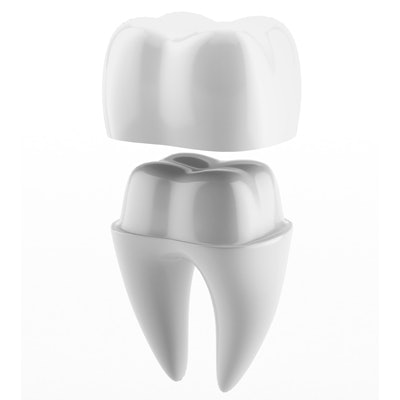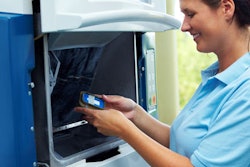
The use of CAD/CAM composite resin crowns for premolars is a growing practice, but there are concerns about the complication rate. Researchers evaluated more than 500 crowns after a follow-up period of more one year to see if the complication rate was an issue.
For practitioners considering using these crowns, their research findings strike a note of caution as the study authors reported a complication rate of almost 16%. The study was published in the Journal of Prosthodontic Research (December 21, 2018).
"The demonstrated complication rate for CAD/CAM composite crowns placed on premolars was 15.9% over a period of up to three years. There was a substantial risk of complications with placement of such a crown on an [removable partial denture] abutment tooth," wrote the authors, led by Shoko Miura, DDS, PhD, of the division of fixed prosthodontics at the Meikai University School of Dentistry in Saitama, Japan.
Complications abound
How well do CAD/CAM composite resin crowns hold up over time? As the popularity of these crowns grows, more studies are needed to evaluate their performance on premolars, specifically when they are placed on a removable partial denture (RPD) abutment tooth.
“The demonstrated complication rate for CAD/CAM composite crowns placed on premolars was 15.9% over a period of up to three years.”
The researchers had two aims for this study:
- Retrospectively evaluate the success and survival rates of CAD/CAM composite crowns on premolars at three years.
- More closely examine associations of placement on a removable partial denture abutment tooth and placement on the distal-most tooth in the arch, with risk factors for clinical complications.
They conducted a retrospective cohort study by reviewing three years of clinical records of more than 320 patients who received a premolar CAD/CAM composite crown treatment. Crowns were manufactured from CAD/CAM resin blocks using a dental CAD/CAM system in a hospital dental laboratory and five private dental laboratories.
The researchers evaluated almost 550 crowns and found that 87 had at least one complication. The most common complication was a loss of crown retention (70 crowns) (see table below).
| Complications seen in CAD/CAM composite crowns | |||
| Complications | RPD abutment tooth (n = 30) |
Distal-most tooth (n = 28) |
Total (n = 547) |
| Loss of retention of crown | 10 | 5 | 70 |
| Loss of retention of core | 0 | 0 | 3 |
| Crown fracture | 2 | 0 | 9 |
| Tooth loss | 1 | 0 | 4 |
| Tooth fracture | 0 | 1 | 1 |
| Totals | 13 | 6 | 87 |
The overall success and survival rates of the 547 crowns were 71.7% and 96.4%, respectively, at three years. However, those rates increased slightly for abutment teeth without a removable partial denture (success rate of 77.3% and a survival rate of 97.9%). The rates for an RPD abutment tooth were considerably lower (success rate of 26.4% and a survival rate of 77.3%). The researchers reported this was a significant difference (p < 0.01).
Mindfulness of case selection
The researchers noted that their results might be affected by missing data, such as survey items related to occlusal force, occlusal scheme, the presence of periodontal disease, or the patients' living habits. They also reported that 128 crowns in 83 patients were excluded from the analysis because of patient dropout.
They recommended that practitioners considering using these crowns take into account the multiple factors that can improve the chances of success.
"The clinical application of a CAD/CAM composite crown to an RPD abutment tooth should require mindfulness of case selection, occlusal forces, and appropriate provisionalization," the study authors wrote.



















